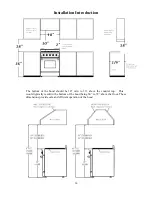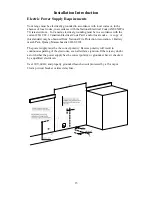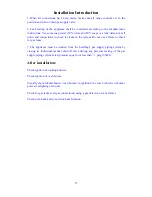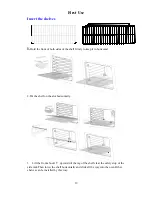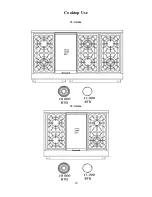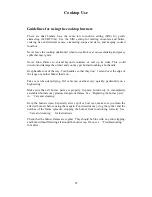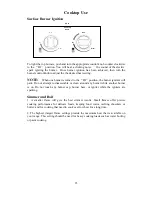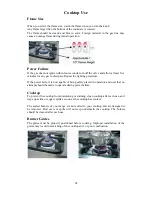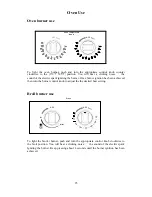
10
Installation Introduction
Do not use a towel or other bulky cloth.
Do not heat unopened food containers.
Build up of pressure may cause the container to explode and result in injury.
During and after use, do not touch interior surfaces of the oven until cool.
Gas Supply Requirements
Installation of this range must conform with local codes, or in the absence of local
codes, with national Fuel Gas Code
,
ANSIZ223.1 / NFPA 54. In Canada, installation
must conform to the current natural Gas Installation /code, CAN 1-1.1-M81 and with
local codes where applicable. This range has been design-certified according to
ANSIZ21.1a, latest edition.
MAXIMUM GAS SUPPLY PRESSURE TO APPLIANCE FOR LP GAS---13.0
IN.W.C.
MAXIMUM GAS SUPPLY PRESSURE TO APPLIANCE FOR NG GAS---10.0
IN.W.C.
APPLIANCE REGULATOR IS SET AT 10.0IN.W.C. OUTLET PRESSURE FOR
LP.
APPLIANCE REGULATOR IS SET AT 5.0IN.W.C. OUTLET PRESSURE FOR
NG.
Keep appliance area clear and free from combustible materials, gasoline, and other
flammable vapors.
Do not obstruct the flow of combustion air into the range and ventilation air away
from the range.
Ventilation: it is recommended that the unit be set under a powered, vented exhaust
hood of sufficient size and capacity.
Before installing the range, you must locate and secure the included anti-tip bracket to
the wall for your range.
The use of cabinets for storage above the appliance may result in a potential burn
hazard. Combustible items may ignite; metallic items may become hot and cause
burns. If a cabinet storage is to be provided, the risk can be reduced by installing a
range hood that projects horizontally a minimum of 5" (12.7cm) beyond the bottom of
the cabinets.

















